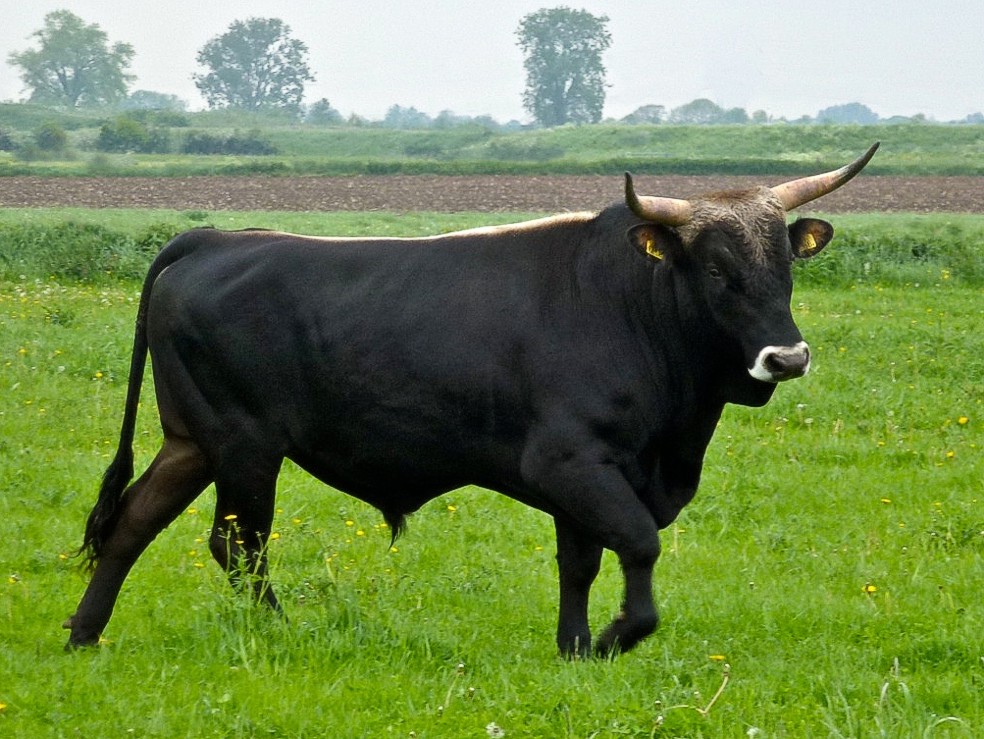The Aurochs is about to return to the mountains of Central Europe

For hundreds of thousands of years the Aurochs was a part of European nature. Since the death of the last aurochs in 1627 in the Jaktorow game preserve in Poland, it seemed that Europe has lost this key species forever. The history is about to change, though. European Wildlife organization in cooperation with the Dutch Taurus Foundation is preparing a project aiming to return the Aurochs to the mountains of Central Europe.
“In mountainous areas every day a number of endangered species of butterflies and birds living in open landscapes become extinct. But those particular species can be saved by introducing big grazing animals including the aurochs because it is their grazing that helps to maintain open landscapes,” says Dalibor Dostal, the director of European Wildlife conservation organization.
The project is part of a program of the European Centre of Biodiversity whose aim is to protect endangered species and to reintroduce the ones that have become extinct in many places – European bison, wild cats or wild bees. And the aurochs, of course.
At present, the Dutch Taurus Foundation is preparing two herds that will form the base for semi-wild breeding herds of aurochs in the mountains of the Czech Republic. The aurochs are brought back by cross-breeding the most suitable primitive breeds of cattle from the whole of Europe within the Tauros Programme.
„The central idea of the Tauros Programme is to find the European bovine breeds with the best ‘primitive’ characteristics and breed them into a new fully self-sufficient cattle breed. It will not be an exact copy of the aurochs, but will be very close. Therefore we call the animal the Tauros. The breeding should be done on a large scale because large numbers are needed,” said Ronald Goderie a board member of the Taurus Foundation. The Aurochs is the animal to choose as our reference, because after about 400.000 years of evolution, the Aurochs had turned into an animal perfected for the European situation.
The Foundation examined about 30 primitive bovine breeds and works with about 6 European breeds, each with at least some of the right characteristics. In each area they prefer to start with a suitable local primitive cattle breed if available and if proven to have enough primitive characteristics. The project started in 2008 and is divided into four phases. In the concluding phase, after about 2025, the expected results will have all the right characteristics of the aurochs – the colour, size, behaviour and the way of grazing. These animals will by then have been recognized as wild living creatures and released into the wild. But the early results from the Taurus Foundation already look very promising, so probably within a couple of years the herds will look like real aurochs-herds.
The first attempt to back-breed the aurochs was realized by the Heck brothers in Germany in the 1920s-1930s. They created the so called Heck cattle that is still being kept at some zoos and used in several nature reserves. However, those particular animals do not resemble the original aurochs neither by their body size, nor by the shape and size of their horns, nor by their behaviour. That was the reason why the Taurus Foundation started with this new back-breeding initiative. This time on a scientific base, including genetic research, that will be performed by the world leading experts on ancient DNA.
Once the aurochs roamed over vast areas of Europe, Northern Africa and Asia. It was an impressive animal, perfectly adapted to the diversity of landscapes it inhabited. The Aurochs ranged from open savannah-like landscapes to marshes, forests and lower mountains and was able to fill in most ecological niches encountered in Europe.
Grown up Aurochs could hold their ground against big predators such as wolves. The long and thick horns acted as a powerful defence against any outside threat. The animal was up to two meters high and due to its long legs and slender build it was an agile animal.
The body shape of the aurochs was, like in other wild bovines, athletic and, especially in bulls, showed a strongly expressed neck- and shoulder musculature. Even in carrying cows, the udder was small and hardly visible from the side; this feature is similar to that of other wild bovines.
Regarding the coat colour of the aurochs; a certain set of genes that in cattle colour genetics is called ‘wild type’ was responsible for a distinct colour pattern; calves were born with a chestnut colour, young bulls changed their coat colour after a few months into a very deep brown or black with a white eel stripe, also called dorsal line, running down the spine. Cows retained the reddish-brown colour. Typical for both sexes was the lightly coloured mouth. The eel stripe and lightly coloured mouth are responsible for an effect called countershading. It means that predators like wolves, and lions in prehistoric times, were not able to see the whole contours of the animal. Since even the smallest detail in appearance has had a meaning, it is therefore our task to breed a bovine that resembles the Aurochs as closely as possible.
Short video of the first generation of backbreeding Aurochs you can see here.
Presentation of Aurochs backbreeding programme you can see here.





